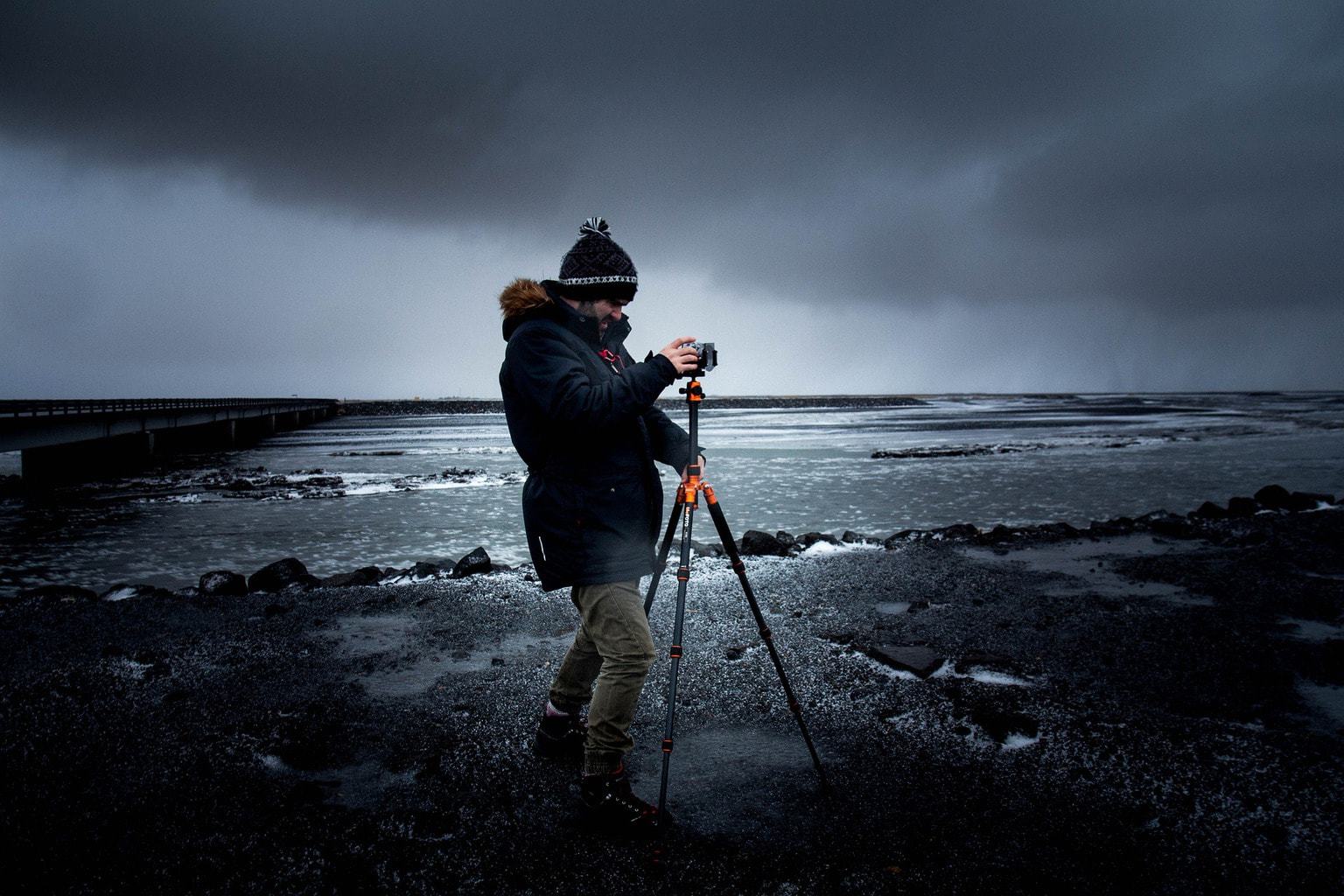Choosing when buying a camera tripod is not an easy task. There is so much supply on the market that one can go crazy looking and deciding. But as you well know, we love to give you a hand, so I will try to make it as easy as possible for you.
With this article I intend to give you an idea of the different types of tripods that exist and their differences so that you can find the most suitable one for your needs. Because once again, I have to tell you that there is not the best tripod in the world, but the best tripod for you, the one that fits your needs.
For more information on photography accessories in general, do not miss this mega guide . And if what you are looking for is a gift, here are many more gift ideas for photographers.
WHAT IS A CAMERA TRIPOD USED FOR?
Let's start with the basics, find out what a tripod is for and determine if you need it ? . A tripod has the function of stabilizing the camera and preventing the image from moving (or shaking, which is the same). After reading this you may think: Ah, ok, if my camera has a stabilizer, then I don't need it. Well, yes and no. If you only shoot with fast speeds, or more or less fast, the stabilizer will work for you, however, it will not be enough for long exposures. Which are? Let's see some examples:
- capture motion
- Photograph the silky effect of water
- night landscapes
- stars
- Lightpainting (Get inspired by this gallery of examples )
- car light trails
These are some examples of long exposure photography, but there is more. And there are also other situations or types of photography for which a tripod is also necessary or very helpful:
- Improve sharpness, sometimes our hand is not as steady as we would like and if you need impeccable sharpness (for whatever reason) a tripod can be a good ally.
- self portraits
- panoramic
- time lapse
- macro photography
- with telephoto lenses
- Bracketing or bracketing
- architecture photography
- animations
- Videos
If you are going to find yourself in one or several of these situations, then you need a tripod ? . As you will see, it is not essential to take photography, however, it opens up a whole world of possibilities.
PARTS OF A TRIPOD
Once we already know its uses or utilities, I am going to introduce you to the parts it is composed of, in this way, when I tell you below which one is best for you according to what type of photos, you will understand what I am talking about ;).

BALL JOINT
The ball head or head is the part that allows you to move the camera in different directions without having to move the entire tripod. They are of different types. If you buy a tripod with an interchangeable ball head , you will have the possibility of having different heads and changing it according to the type of photography you are going to do without having to have several tripods.
This is advisable when you are going to give it very different uses, for example, you do the same panoramic as action photography with telephoto lenses. If this is not the case, it will probably be worth it with one with a fixed ball joint, which are cheaper. Now let's see the types of ball joints that exist, below you will see an image of each one:
- Ball joint (or rocker). They are simple, quick to use and allow flexibility of movement. Ideal for use with telephoto lenses for moving subjects.
- Three-axis head. It allows vertical and horizontal movement and is indicated for landscape, studio, macro or architectural photography.
- Joystick ball joint. It is a type of ball head, but with a trigger that allows movement in all directions. It is perhaps the most comfortable and ergonomic, it allows great freedom of movement, making it ideal for those who need to change the frame very quickly, such as in sports photography. The drawback is that they are not the most accurate and tend to lose stability. If you are going to use it a lot for long exposure photography, it may not be the best option.
- Panoramic kneecap. It is a special ball joint that allows you to take panoramic views and 360º photographs.
- Zipper ball joint. It allows the possibility of making millimeter movements. For this reason they are ideal, for example, for macro photography or with large telephoto lenses because they better withstand heavy equipment. On the other hand, it is that they are usually very heavy, they are not to be carried everywhere;), they are not exactly the cheapest either. They are for a very specific purpose.
- 2D head. They control the vertical and horizontal movement by means of a handle with the intention of obtaining greater fluidity in recording videos.





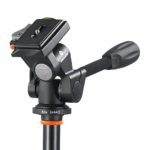
PAWS
They are the ones that support the weight of the tripod. There are those that can be opened independently, which are the most suitable for uneven terrain; and those that extend at the same time, more suitable for studio photography, for example.
The legs usually have between three and five sections. They can be opened and closed with quick-closing tabs or with a swivel clamping system.

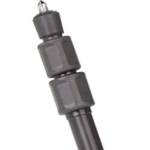
The most suitable diameter of the legs to support a medium weight equipment is between 28 and 38 mm.
Regarding the feet, where the legs end, they can be made of plastic or rubber, more recommended for indoors. Or metallic tips, to fix on very slippery terrain, such as ice. There are also those that can be changed to better adapt to different surfaces, although they are usually high-end.
SHOE
It is the element that holds the camera and prevents it from falling.
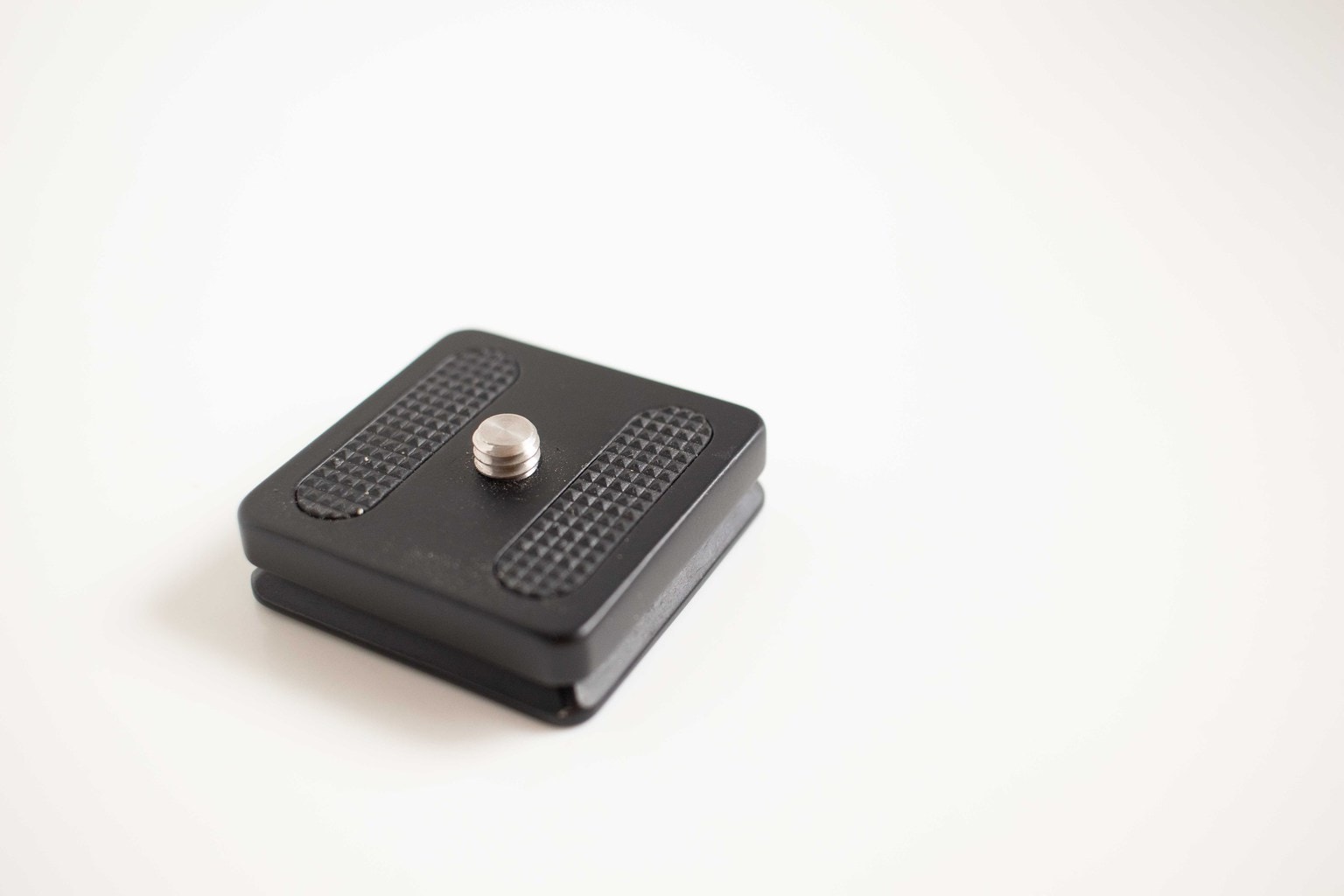
You can find that they screw directly or with a quick coupling system. That is, the shoe is screwed to the camera and when you want to place it on the tripod you attach it to the quick system. It is a much more comfortable system because you can leave the shoe on the camera and not have to screw it every time. This quick coupling system can be made of plastic or a more resistant material. The drawback of plastic ones is that they can break.

Here's the proof. I dropped mine and it broke, what you see in white was an attempt to fix it with a putty that obviously didn't work for me (I think it lasted for one session ? ). Luckily, all experience is learning and I got one that had the most resistant coupling system.
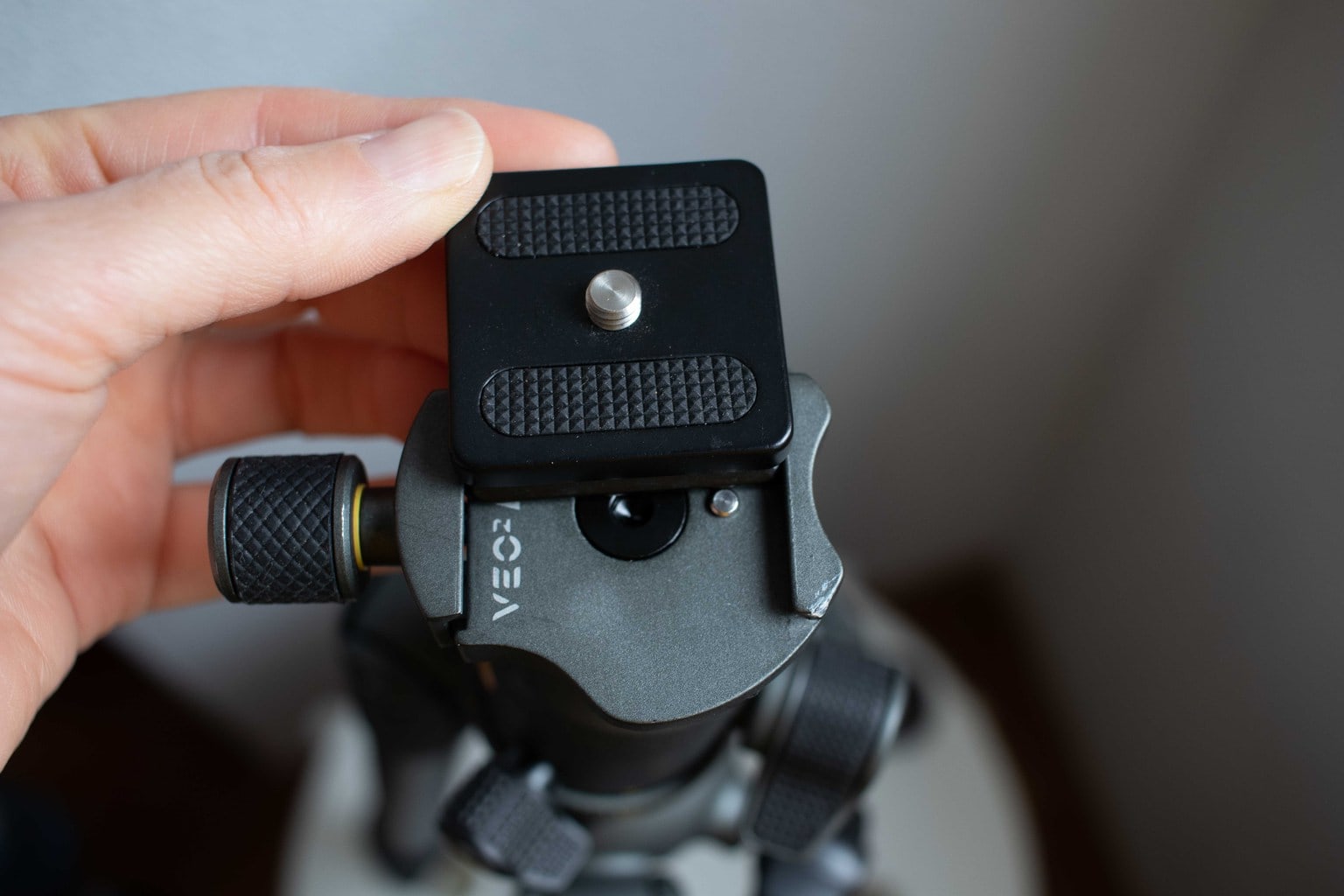
TRIPOD TYPES
In this section I will make a summary of the types of tripod that you can find.
- Low range. They are usually made of aluminum or plastic and have no separable parts. For example this.
- Medium range (light). Here we find tripods that seek a balance between stability and lightness. Designed for travel or easy transportation. Depending on the price, you will find them with a ball joint that can be separated or of the previous type, which form an indivisible whole. This could be a good example of a mid-range tripod.
- Upper middle range. They are more robust and allow a greater load capacity. Designed to work, for example, with telephoto lenses. This one, for example, can support up to 9kg
- Mini or pocket tripods: designed to always carry with you and to be able to put the camera on a table, a rock or the ground, for example. They do not usually support too much weight, although you can use these tripods with an SLR camera and there are some, like this one, for example, that support up to 8 kg.
- Flexible mini tripods: basically like the previous one but whose legs you can bend or get entangled in a branch. Here I told you about mine, with which I am very satisfied. You can use it with SLR, compact, mobile or GoPro.
- Monopod: halfway between freehand and tripod, you have the monopod that offers more stability than shooting handheld but more freedom of movement than the tripod. Ideal for sports and wildlife photography, like this model.
WHAT DETERMINES THE STABILITY OF A TRIPOD?
Some elements influence the stability of a tripod, let's see what they are so that when choosing one, you can look closely and know what you need.
- Weight: weight is decisive in stability. The heavier a tripod is, the more it costs to transport it and it is also more stable. If you are not going to take it out of a studio, it is clear that you should be heavy. If it is to go outside you have to assess, if you prefer something light because you are going to always carry it with you and travel long roads, perhaps you are interested in something lighter. But if you want stability above all else, your back will have to sacrifice a bit. Please, do not go with half measures. Stop for a moment to reflect on which of the two advantages interests you more: comfort or stability.
- Sections – Having more than three sections affects the stability of a tripod. On the other hand, if it is for traveling and stability is not your biggest concern, you should keep in mind that the greater the number of sections, the more it will fold and it will be more compact to put it in your suitcase.
- Leg diameter: if the diameter is too small, it will affect stability, especially with heavier equipment. Around 30mm is a good diameter, as I told you above.
- Center Column: The more you extend the center column, the more stability you take away. So a tripod that is at your height when you extend it is convenient, because if you have to resort to the central column to avoid having to bend down, you will lose stability.
- Materials: the quality and hardness of the materials is also very important, as is their finish.
- Leg stops : if you intend to put it in the water and/or use it on very slippery surfaces, it is convenient that you can change the rubber stoppers on the legs for nails so that they have a good grip on the ground. Although the rubber bumpers will serve you for most situations.
MATERIALS
As you can imagine or have been able to verify, the tripods can be made with different materials:
- Aluminum: light and cheap, but more unstable. It offers resistance to corrosion and tends to have a better value for money. Not suitable for working at temperatures below 0ºC. Your skin can get stuck!
- Carbon fiber: they are the most expensive, but they are also much lighter than aluminum ones and very stable. They dampen vibrations very well and work the same with extreme cold or heat conditions. To compensate for the light weight, the hook is used to provide more stability and lower the center of gravity. While in the rest of the materials the legs can have different shapes, in the carbon fiber ones they are usually tubular (tube shape) and with a rotating fastening system instead of a quick release.
- Basalt: its use is less widespread (for now). It shares the characteristics of carbon fiber, however it is harder and lighter.
- Stainless steel: they are very heavy, they are more intended for video equipment than for regular use.
OTHER ASPECTS TO CONSIDER WHEN BUYING A TRIPOD
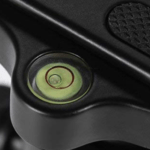
WHAT TRIPOD DO I BUY?
After all this information, you may be wondering which tripod to buy. As we have already said, it will depend on your needs.
If your budget does not reach more and you do not know if it will reach you in a long time but you are dying to try long exposure, or take night photos. Do not be sad. Better to have a tripod than not. The most purists will tell you that it is wasting money, we will tell you that beyond the absolute clarity of great stability, there is learning. The one that you enjoy with what you like the most and don't get frustrated because you can't have the most expensive tripod. There are quite acceptable ones for less than 100 euros.
Now, if you are already clear about what gets you out of bed at odd hours; if you know what kind of photography is the one that makes you vibrate; if you have a tripod that no longer works for you; The one you had has broken, or it does not give you what you need, so our advice is to analyze this article carefully. Once well analyzed, make a list with the features that must have to cover these needs and take the time you need to save or to find the tripod that best suits your list of features. A good tripod is always a good investment.
THE BEST TRIPODS FOR CAMERAS
Here are some general recommendations. These are tripods very well valued by users and with great value for money. The best tripods that we can recommend:
- Vanguard Alta Pro 263AGH
- Manfrotto Befree Advanced
- K&F Concept TC2534
- K&F Concept Professional Tripod TM2534T
- Vanguard VEO 2 265AB
- Manfrotto 190 Xpro
- Benro A3573FS6
VANGUARD ALTA PRO 263AGH
Robust and stable, with ball joint and single grip. Supports up to 6kg. A marvel that you can find for about 150 euros.
MANFROTTO BEFREE ADVANCED
It's hard to come up with an aluminum tripod that's compact, cheap, and at the same time has a ball-and-socket system, but here's one for you. Complete and for less than 200 euros.
K&F CONCEPT TC2534
If you are looking for a versatile tripod, this may be your option.Carbon fiber, holds up to 10kg, tripod and monopod in one. Stable and with quick release shoe.
K&F CONCEPT PROFESSIONAL TRIPOD TM2534T
This other tripod is ideal for macro photography and for those who need a 360º turn. Supports up to 10kg. You can find it for about 170 euros.
MANFROTTO 190 XPRO
For the most demanding photographers. Maximum load of 7kg, but it has a central column mechanism at 90?, Quick Power Lock (QPL) system for locking the legs, adding security and robustness and XPRO ball head with polymer rings that replace grease and add fluidity in the joints. movements. On Amazon it costs about 270 euros.
BENRO KH26P
If yours is video and you need to buy a tripod, you have this one from Benro for approximately 250 euros. More video tripods in this other link.
MOBILE TRIPODS
The characteristics to support a smartphone are different from those that a tripod that stabilizes a camera must have.
In the link article we leave you the best mobile tripods on the market , high, low, with light, etc. Whatever you need, you will find it.
To finish, I leave you with an essential article in a matter of tripods, if you do not learn How to Correctly Mount a Tripod , it will not help you to have the best tripod you can afford.

